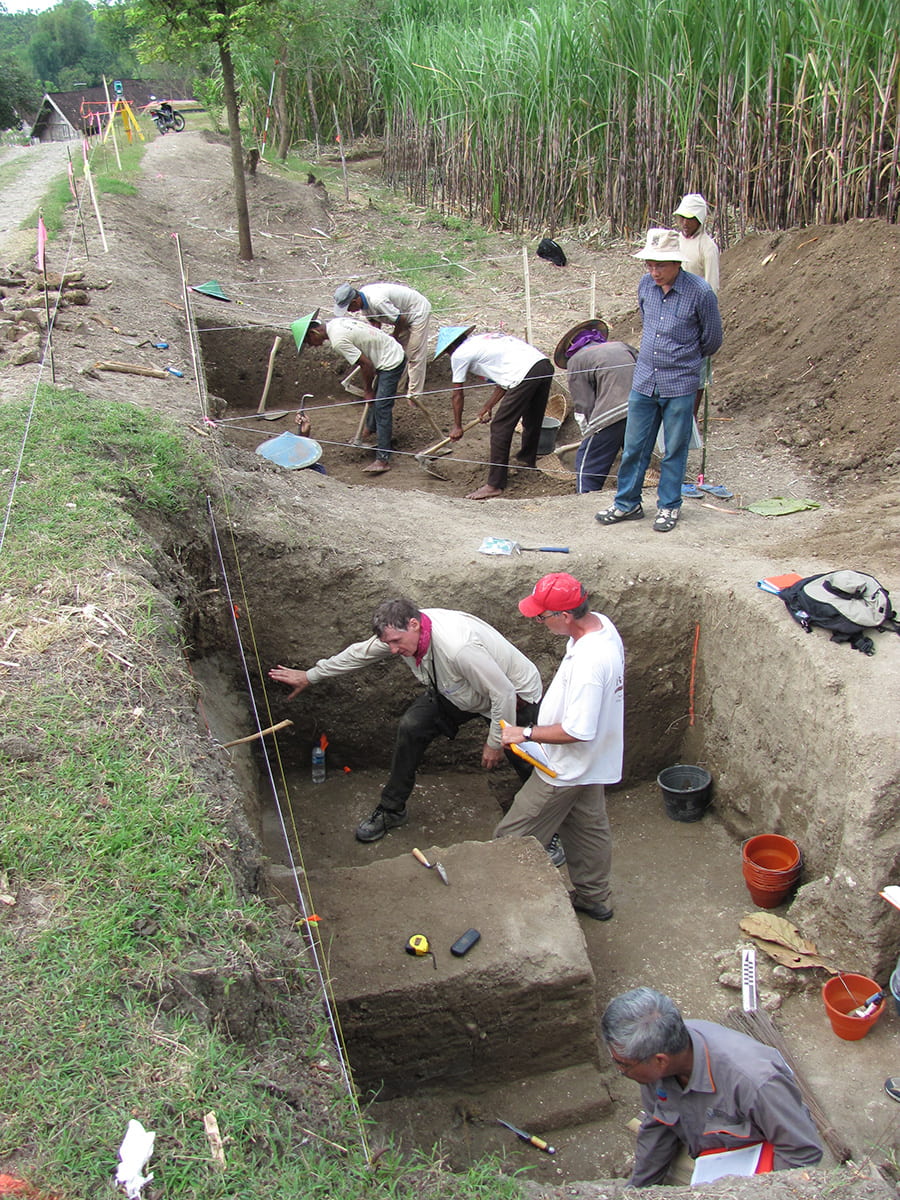UNE archaeologist Associate Professor Mark Moore is part of an international team to have finally unravelled a 90 year mystery surrounding Java’s early human ‘Homo erectus’ fossils.
The groundbreaking discovery of 12 comparatively broad and flat human skulls in Ngandong, Java – the last known occurrence of ‘Homo erectus’ worldwide, considered ancestors of modern humans, was made in 1931-33. However, complexities with the site of the fossils meant archaeologists have struggled to date it, returning ages from 53,000 to 500,000 years old.
Now, researchers say they have been able to conclusively determine the fossils’ true age by applying a new suite of analyses using modern archaeological science.
“After many unconvincing attempts to date the site over the years we knew we needed to try a different approach,” says joint lead researcher, Macquarie University‘s Associate Professor Kira Westaway.
“Previous studies fixated on the evidence itself, so instead we viewed the fossils as a piece of a much larger puzzle, and tried to understand how they fitted into the wider valley and region.”
The fossil site in Ngandong is in a river deposit that represents a rung on a ladder of floodplain steps called terraces. The researchers looked at how the surrounding Solo River system was created, how the terraces were formed and how the fossils were deposited to build a comprehensive picture, before re-excavating the site to discover and date the original bone bed found in the early 1930s.
“Finding the original bone bed was crucial for this study. That way there could be no confusion or doubt that the material we dated was directly associated with the original ‘Homo erectus’ discovery,” says Yan Rizal from the Bandung Institute of Technology | ITB, joint lead researcher.
“It was great feeling to finally see that deposit clearly, and know we could finally draw a line under the story of ‘Homo erectus’.”
The combination of the expertise from around 19 universities and museums worldwide helped ensure the robustness of the results.
“We were lucky to have some of the best dating facilities in the world at our disposal, including the equipment that dated the famous ‘Hobbit’ fossils of Southeast Asia, the human teeth from Lida Ajer cave in Sumatra and fossils from the Rising Star cave in South Africa,” says researcher Renaud Joannes-Boyau from Australia’s Southern Cross University.
The combination of dating techniques has confirmed that ‘Homo erectus’ went extinct in the middle of the last interglacial phase, between 117-108,000 years ago, which raises some interesting possibilities about interactions between Asia’s early people.
The age range for Ngandong ‘Homo erectus’ places the site into a framework for human evolution in Southeast Asia, suggesting they existed around the same time as Indonesia’s ‘Homo floresiensis’ (Hobbits) and the newly-discovered ‘Homo luzonensis’ in the Philippines.
The findings have today been published in ‘Nature’ online: https://www.nature.com/articles/s41586-019-1863-2
Photo: Earlier site excavations in 2010. Credit: Russell L. Ciochon, University of Iowa.



Recent Comments